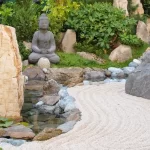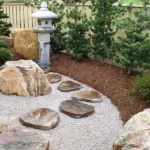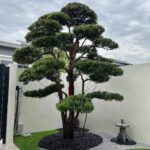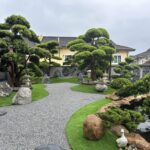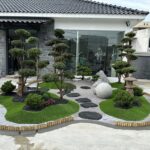Japanese gardens are renowned for their serene and peaceful ambiance, creating a harmonious balance between nature and human elements. If you’re looking to transform your outdoor space into a tranquil retreat, here are some Japanese garden ideas to inspire you.
One popular feature of Japanese gardens is the use of water elements, such as koi ponds, waterfalls, or streams. These features not only add a calming element to the garden but also serve as focal points and create a sense of movement. You can incorporate water elements into your garden by installing a small pond with colorful koi fish or adding a tranquil bamboo fountain.
Another key element in Japanese gardens is the use of natural materials, such as stone, gravel, and wood. Stone lanterns, stepping stones, and gravel pathways are common in Japanese garden design and add a sense of structure and organization to the space. Consider adding a stone lantern as a centerpiece in your garden or creating a pathway lined with gravel and bordered by bamboo or wooden edges.
When it comes to plant selection in a Japanese garden, simplicity is key. Choose plants that are native to Japan and have a minimalist aesthetic, such as conifers, bamboo, Japanese maple trees, and moss. Incorporate different shades of green and textures to create visual interest while maintaining a cohesive and harmonious look.
Japanese gardens are known for their meticulous pruning and shaping of plants, particularly bonsai trees. Bonsai trees are miniature trees that are carefully cultivated and shaped to create a sense of age and character. Consider adding a few bonsai trees to your garden or incorporating other traditional Japanese pruning techniques, such as cloud pruning or Niwaki, to create a luscious and sculpted landscape.
To enhance the sense of tranquility in your Japanese garden, consider adding elements of Zen Buddhism, such as rock gardens or meditation spaces. A traditional rock garden, also known as a Zen garden, consists of carefully raked gravel or sand with strategically placed rocks and plants. These gardens are meant to evoke a sense of calm and contemplation, making them perfect for meditation or simply enjoying a moment of peace in your garden.
Finally, don’t forget to add personal touches to your Japanese garden to make it your own. Consider adding a tea house or seating area where you can relax and enjoy the beauty of your garden. You can also incorporate elements of Japanese culture, such as lanterns, torii gates, or statues, to create an authentic and serene atmosphere. With a little creativity and inspiration, you can transform your outdoor space into a tranquil and harmonious Japanese garden that will provide a peaceful retreat for years to come.
 redboth.com Decoration ideas for your home
redboth.com Decoration ideas for your home





















